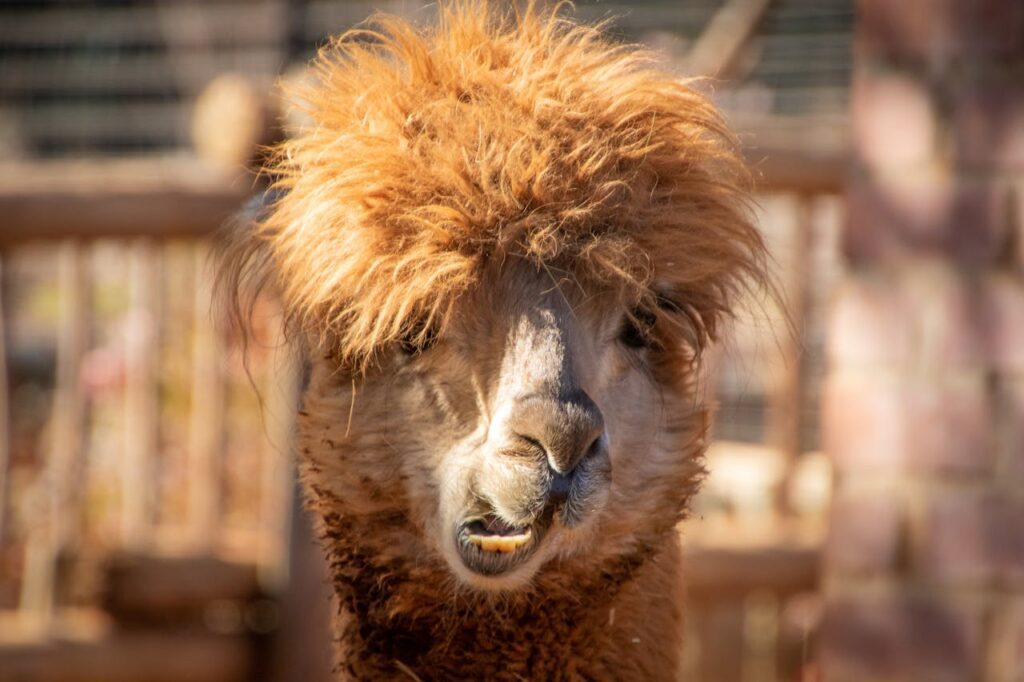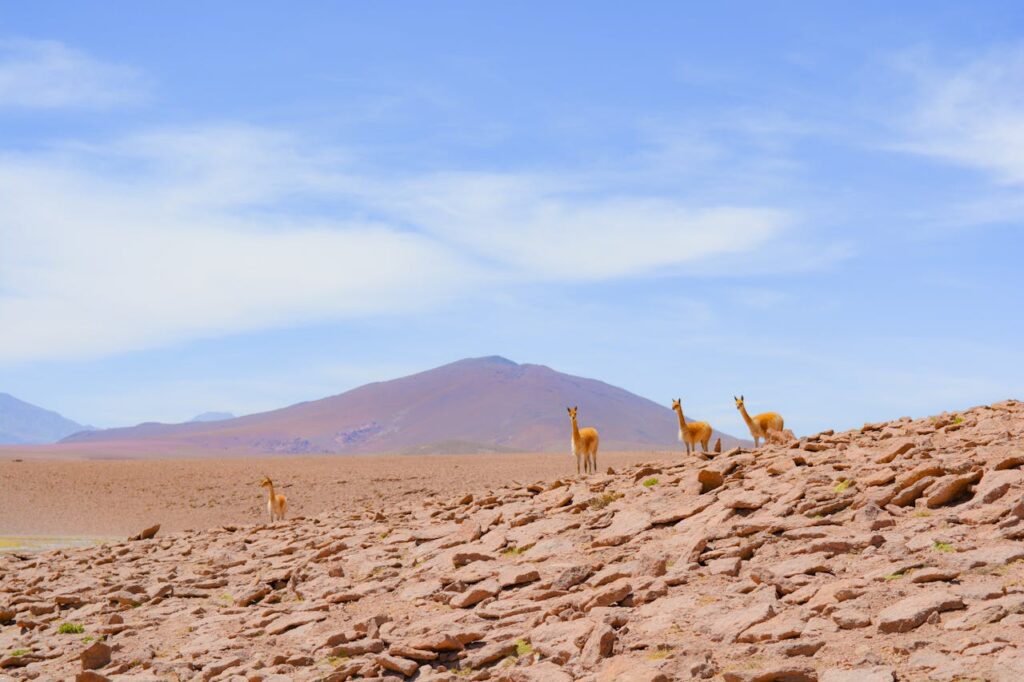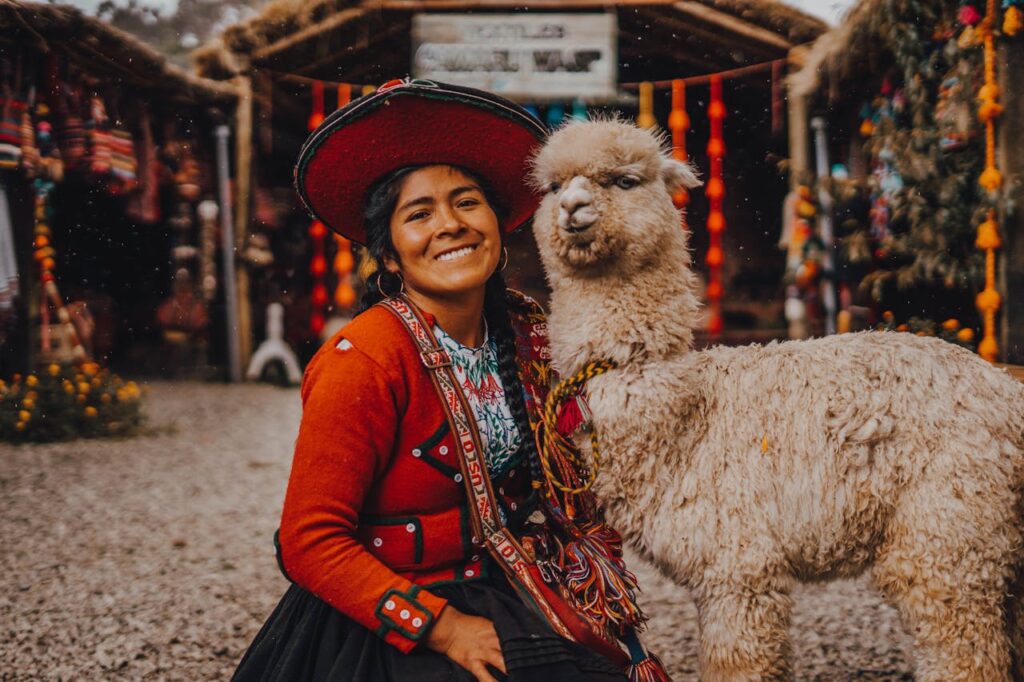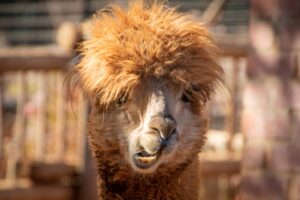20 Fun Facts About Llamas: The Andean Marvels
Llamas, the charismatic camelids of the Andean highlands, have long fascinated those who encounter them. Beyond their evident charm and utility, llamas possess a wealth of intriguing characteristics and a rich history that intertwines with human societies. Let’s explore 20 fun facts about llamas, shedding light on these remarkable creatures.

- Llamas are Not Native to North America: Despite their popularity on farms and petting zoos across North America, llamas are native to the Andean region of South America. Their introduction to other continents is a relatively recent event, showcasing their adaptability and appeal.
- Built-In Environmental Adaptations: Llamas have adapted perfectly to their harsh mountainous environment. Their thick fur protects them from cold, while their uniquely shaped red blood cells carry more oxygen, essential for high altitudes, highlighting one of the many fascinating fun facts about llamas.
- Ancient Helpers of the Andes: Llamas were domesticated by the peoples of the Andes over 5,000 years ago, primarily for their ability to carry heavy loads over tough terrain. They were integral to the Inca civilization, used for transportation, wool, and even as sacrificial offerings.
- Communicative Creatures: Llamas communicate through a series of hums, which can convey a range of emotions or intentions, from contentment to anxiety. This vocal communication is crucial for maintaining the social bonds within their herds.
- A Spitty Reputation: One of the more notorious fun facts about llamas is their tendency to spit. This behavior is usually a last resort in disputes over food or as a defense mechanism. Interestingly, they only spit at other llamas, not humans, unless severely provoked.
- Dietary Preferences: Llamas are herbivores with a diet consisting mainly of grass. Their efficient digestive systems allow them to thrive on sparse vegetation, which is ideal for the Andean landscape where they roam.
- Llamas vs. Alpacas: Often confused with their cousins, the alpacas, llamas are noticeably larger and have a more elongated face. While both species are prized for their wool, llamas are primarily beasts of burden, whereas alpacas are bred for their soft, luxurious wool.
- Natural Lifeguards: Intriguingly, llamas have been used as guard animals for sheep and other livestock. Their natural vigilance and protective instincts make them excellent deterrents against predators like coyotes.
- Their Social Structure: Llamas are highly social animals, living in herds where they form close bonds with each other. Their social hierarchy is established through non-violent means, showcasing their sophisticated animal society.
- A Woolly Wonder: Llama wool is incredibly warm, lightweight, and water-repellent, making it highly valued for clothing and blankets. Unlike sheep’s wool, it does not contain lanolin, which makes it hypoallergenic and suitable for sensitive skin.

Fun Facts About Llamas Continued:
- A Woolly Wonder: Llama wool is incredibly warm, lightweight, and water-repellent, making it highly valued for clothing and blankets. Unlike sheep’s wool, it does not contain lanolin, which makes it hypoallergenic and suitable for sensitive skin.
- Unique Footwear: Llamas have two-toed feet with leather-like pads, which provide excellent traction on rocky terrain. This adaptation allows them to navigate the rugged Andes mountains efficiently.
- Impressive Load Bearers: Llamas can carry about 25% to 30% of their body weight, making them invaluable to Andean cultures for transporting goods across difficult terrains.
- Distinctive Personalities: Among the fun facts about llamas is their range of personalities. From outgoing and curious to shy and reserved, llamas exhibit a wide spectrum of temperaments, much like humans.
- The Multipurpose Tail: A llama’s tail is not just for show. It serves as a communication tool, signaling their mood to other llamas, and is also used to swat flies away.
- Reproduction and Birth: Llama pregnancies last about 11 months, leading to the birth of a single baby, known as a cria. Crias can stand and walk shortly after birth, demonstrating their hardiness from an early age.
- Cultural Significance: Llamas hold deep cultural significance in Andean societies, featuring prominently in folklore, rituals, and traditional celebrations, symbolizing prosperity and well-being.
- Llamas in Therapy: Llamas are increasingly used in animal-assisted therapy, thanks to their gentle demeanor and ability to form strong bonds with humans. They’ve been shown to help reduce anxiety and promote emotional well-being.
- A Variety of Colors: Llamas come in a wide range of colors, from white to black and every shade in between, including patterns and spots. This diversity adds to their visual appeal and has practical implications for breeding and wool production.
- The World’s Oldest Domesticated Animals: Llamas are among the world’s oldest domesticated animals. Their long-standing relationship with humans is a testament to their resilience, utility, and enduring charm.
- Enduring Popularity: Today, llamas are celebrated in popular culture, from children’s books to internet memes, underscoring their enduring appeal and the collective fascination with these Andean treasures.
These fun facts about llamas offer a glimpse into the world of these fascinating creatures, whose presence enriches our landscapes and our lives. From their historical roots in ancient civilizations to their modern-day roles as companions, protectors, and cultural icons, llamas continue to captivate and charm people around the globe.

Frequently Asked Questions About Llamas
What are llamas used for? Llamas are versatile animals historically used for their wool, meat, and as pack animals to transport goods across the challenging terrains of the Andes Mountains. Today, they also serve as guard animals for herds of sheep and goats, thanks to their protective instincts. Additionally, llamas are increasingly popular as pets and in animal-assisted therapy due to their gentle and friendly nature.
Can llamas be kept as pets? Yes, llamas can be kept as pets, but they require specific care to ensure their well-being. They are social animals, so it’s recommended to keep them in pairs or groups to prevent loneliness. Llamas need space to roam, a diet of grass or hay, and shelters that protect them from extreme weather. Before adopting a llama as a pet, it’s important to check local zoning regulations and ensure you have the appropriate resources and space to care for them properly.
Do llamas spit at people? Llamas do spit as a way to communicate discomfort, fear, or to establish dominance within their herd. However, they primarily spit at each other and rarely at humans unless they feel threatened or have been improperly socialized. Training and gentle handling from a young age can minimize this behavior in llamas kept as pets or working animals.
How long do llamas live? Llamas typically live between 15 to 25 years, with their lifespan influenced by factors such as genetics, diet, and overall care. With proper nutrition, veterinary care, and a stress-free environment, llamas can enjoy a long and healthy life.
What do llamas eat? Llamas are herbivores, and their diet primarily consists of grass. They can also be fed hay, especially during the winter or in areas where grass is not plentiful. Additionally, llamas may require supplemental feed that provides the necessary vitamins and minerals not available in grass or hay alone. Fresh water must always be accessible to them.
Are llamas and alpacas the same? While llamas and alpacas are closely related and both belong to the camelid family, they are distinct species with different uses and characteristics. Llamas are larger, with a height of about 4 feet at the shoulder and weighing up to 400 pounds, and have been traditionally used as pack animals. Alpacas are smaller, with a softer fleece, and are primarily bred for their wool. Additionally, llamas have a longer face, while alpacas have a shorter, more blunt face.
How can you tell if a llama is happy? Llamas show contentment through body language and vocalizations. A happy llama is relaxed, with its ears perked up and its tail down. They may hum softly when content and will be curious and engaged with their surroundings. Understanding and recognizing these signs can help in providing the best care for these animals.
Do llamas require a lot of maintenance? Llamas require moderate maintenance. They need regular shearing to keep them cool in the summer, and their nails may need trimming to prevent foot problems. Dental care is also important as their teeth can become overgrown. A clean supply of water, a proper diet, and a spacious, secure area to roam are essential for their health and well-being.
Can llamas be trained? Yes, llamas are intelligent animals that can be trained to follow simple commands, walk on a leash, and carry packs. They are known for their willingness to learn and cooperate when treated with patience and respect. Training should start at a young age for the best results.
What is the social structure of a llama herd? Llamas have a hierarchical social structure within their herd, with both males and females establishing a pecking order. They communicate their social status through body language, such as neck posturing, ear positioning, and, occasionally, spitting. The social dynamics of a herd can affect the well-being of individual llamas, so it’s important to monitor their interactions and make adjustments to their living arrangements if necessary.













